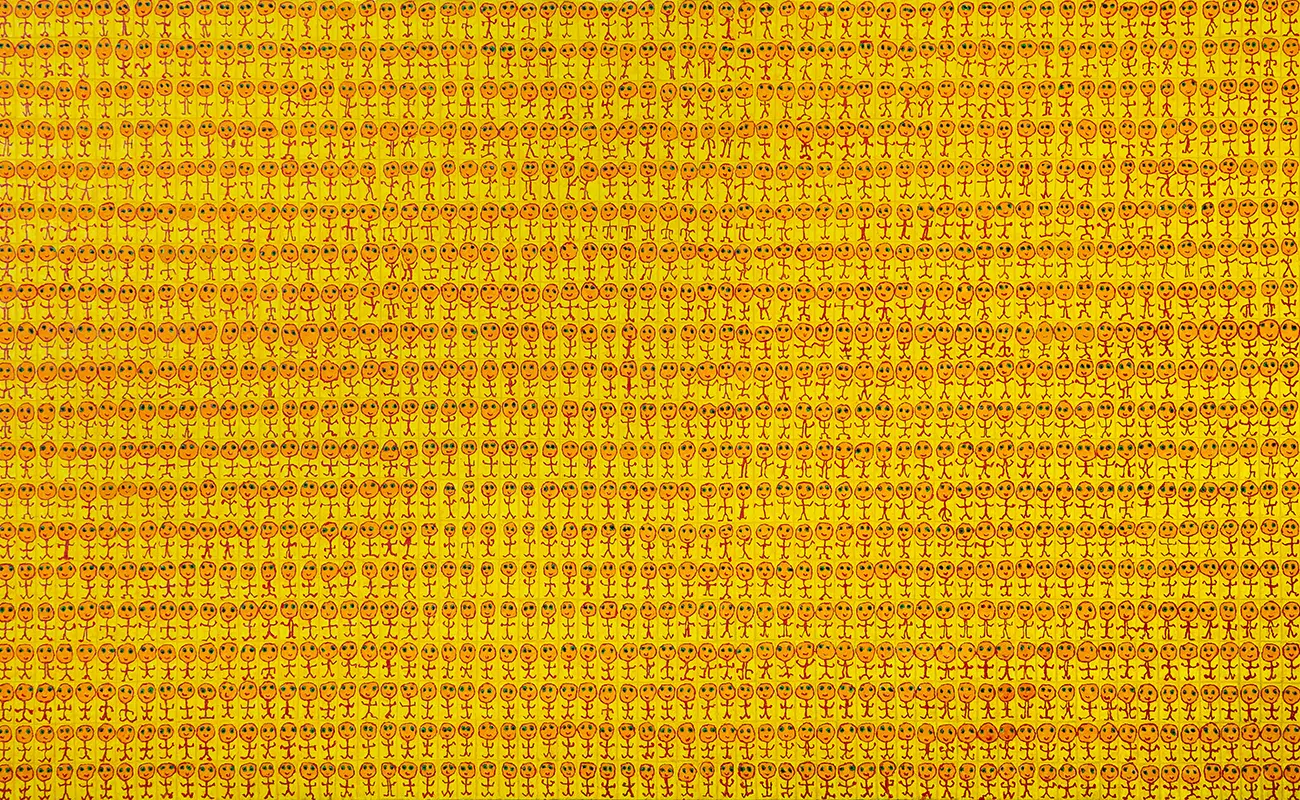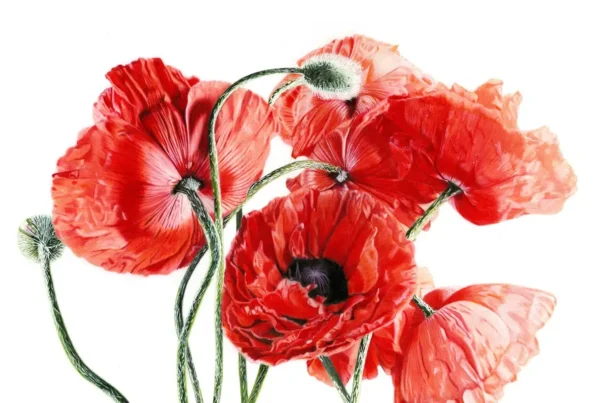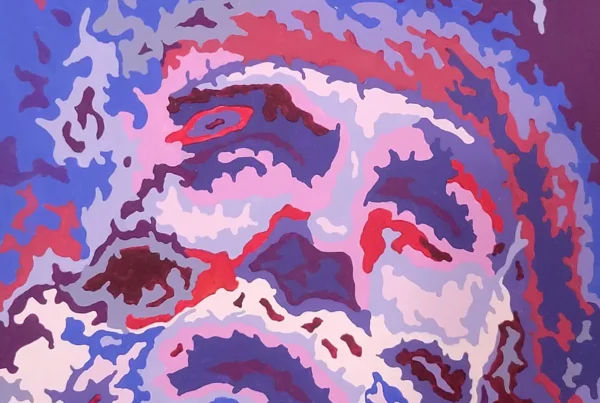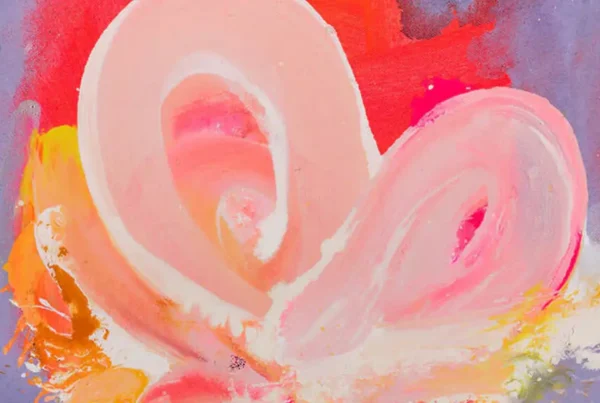“I do not think there was one thing that inspired me to become an artist. It was a process… By then I knew.”
Ori Aviram: The Genesis of a Visionary
Ori Aviram, born in 1965 in Jerusalem, Israel, embarked on his artistic journey in an unconventional manner. His initial tryst with art wasn’t immediate but a gradual realization, ignited during a brief stay in London in 1982. The National Gallery, with its vast array of masterpieces, played a pivotal role in awakening Aviram’s passion for painting. However, it wasn’t until later in his life that he fully embraced this calling. This slow-burning inspiration was unlike the typical lightning strike of artistic epiphanies, highlighting the unique path Aviram tread on his way to becoming an artist.
The artist’s formative years were marked by exploration and experimentation. During his military service, Aviram found solace and expression in sculpting, particularly portraits. This period was crucial in cementing his decision to pursue art professionally. However, it wasn’t until 1999, after years of working in advertisement and TV program production, that Ori Aviram held his first exhibition as a sculptor. This marked a significant shift in his life, steering him away from the commercial world and towards a more creative and fulfilling path. The exhibition was not just a display of his work but a declaration of his new identity as an artist.

Ori Aviram: The Evolution of an Artist
Ori Aviram’s artistic journey took a dramatic turn following his initial exhibition. The shift from sculpting to painting was not just a change in medium, but a deeper transition in his creative expression. His second exhibition in 2000, featuring oil paintings, was a testament to this evolution. Aviram quickly realized that painting, particularly with oil on canvas, was where his true passion and talent lay. This revelation was crucial in defining his future works and artistic direction. The transition showcased his versatility and willingness to explore different facets of art, further enriching his growing portfolio.
This evolution was deeply influenced by Aviram’s first encounter with painting at the National Gallery in London. This experience shaped his conception of art, leading him to draw inspiration from diverse sources such as the Bible and Greek mythology. His journey through the history of painting, culminating in an interest in Abstract art, reflects a deep engagement with the various movements and styles that have influenced the art world over the centuries. This historical and thematic diversity in his inspirations underscores Aviram’s depth as an artist and his ability to synthesize a wide range of influences into a coherent artistic vision.

The Artist’s Philosophy: Ori Aviram on Inspiration and Style
For Ori Aviram, becoming an artist was not the result of a singular moment of inspiration but rather a gradual, multifaceted process. His artistic inclination was nurtured through various influences, starting with a bohemian painter friend of his father’s. This individual, starkly different from Aviram’s own background, provided a thought-provoking contrast that sparked his interest in the arts. As he encountered more individuals immersed in the world of art, including a friend who pursued arts education and another who became a sculptor, his own artistic identity began to take shape. These experiences, coupled with his transformative time at the National Gallery in London and sculpting during military service, laid the foundation for Aviram’s artistic journey.
This journey took a decisive turn after a significant personal event – his divorce and subsequent departure from his production career. It was in 1999, with the hosting of his first exhibition, that Aviram truly embraced his artist identity. This turning point signified more than a career change; it was a profound shift in his life’s direction, marking the start of a dedicated pursuit of artistic expression. In his art, Aviram oscillates between figurative and abstract expressionism, embodying a dynamic and ever-evolving style. He identifies as a colorist, an aspect evident in his varied themes that range from biblical and mythological narratives to urban landscapes and organic abstracts. The Circle, a motif that has captivated him in recent years, signifies his continuous exploration within the abstract realm.

Ori Aviram: Influences and Milestones
Ori Aviram’s artistic influences are as diverse as his styles. He draws inspiration from a spectrum of artists, beginning with Ivan Schwebel, an American-Israeli painter whose works likely resonated with Aviram’s own cultural and geographical background. Jean-Philippe-Arthur Dubuffet’s influence suggests Aviram’s appreciation for art that challenges conventional aesthetics, while the inclusion of Diego Rodriguez de Silva y Velazquez hints at a reverence for classical mastery. However, it is Kazimir Malevich, particularly his iconic “Black Square,” that profoundly impacted Aviram’s artistic trajectory, sparking his interest in abstract painting. This piece, for Aviram, symbolizes a pivotal moment in art history, representing a significant shift in the understanding of painting and its societal role.
Aviram’s journey into abstract art was not just about embracing a style but delving into its historical and philosophical depths. He regards Malevich not only as a major figure in abstract art but as a co-founder of the movement, attributing to him an influence comparable to the Renaissance in painting. This admiration was so profound that in 2014, Aviram planned an exhibition to commemorate the centenary of Malevich’s “0,10” exhibition. However, a revealing conversation with an art historian made him reconsider his understanding of Malevich’s work, particularly its religious aspects. This led to a significant, albeit disheartening, decision to abandon his planned exhibition. Yet, in this setback, Aviram found a new direction, channeling his energy into creating hundreds of circles, a shape that has since become central to his work. This episode exemplifies Aviram’s commitment to continuous learning and adaptation, key traits that have defined his artistic journey.






